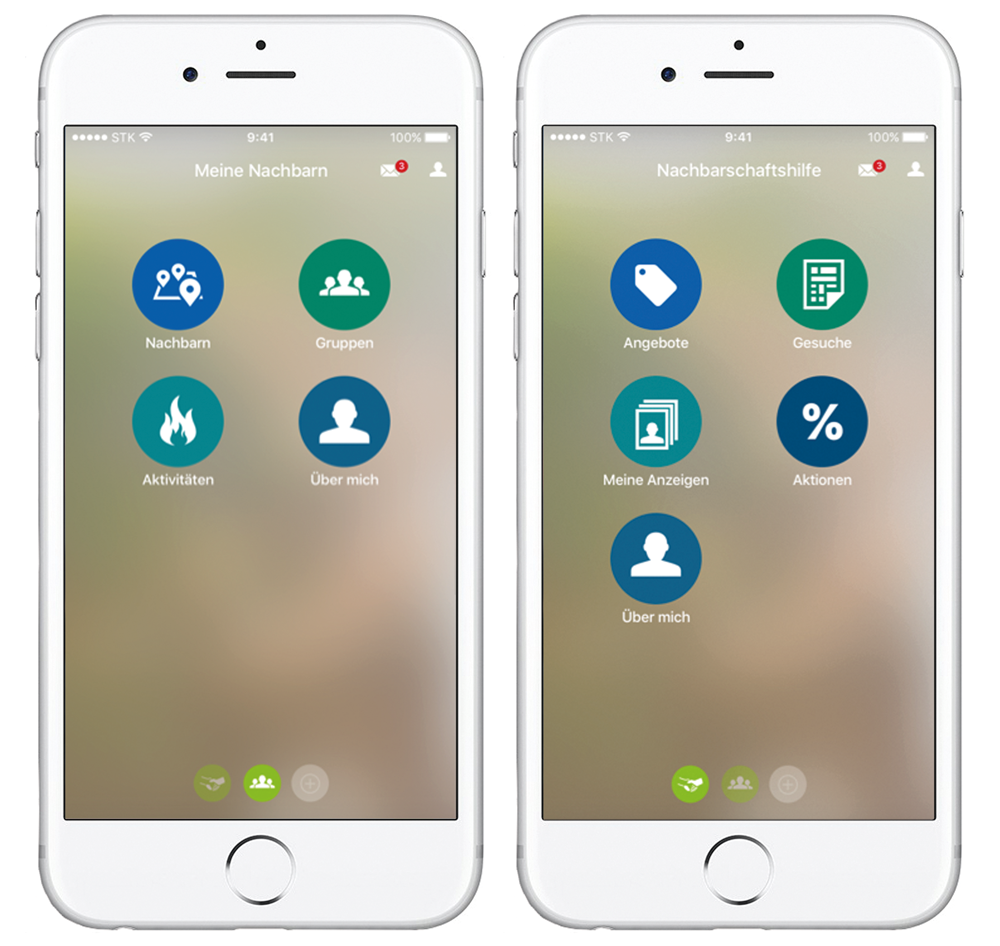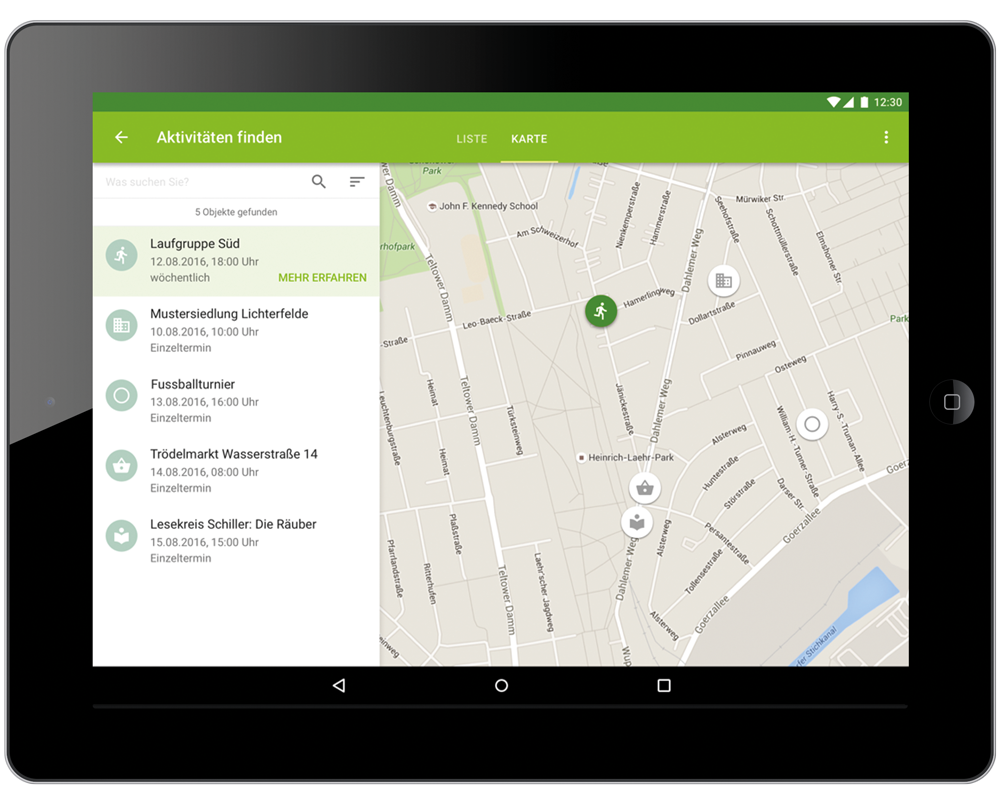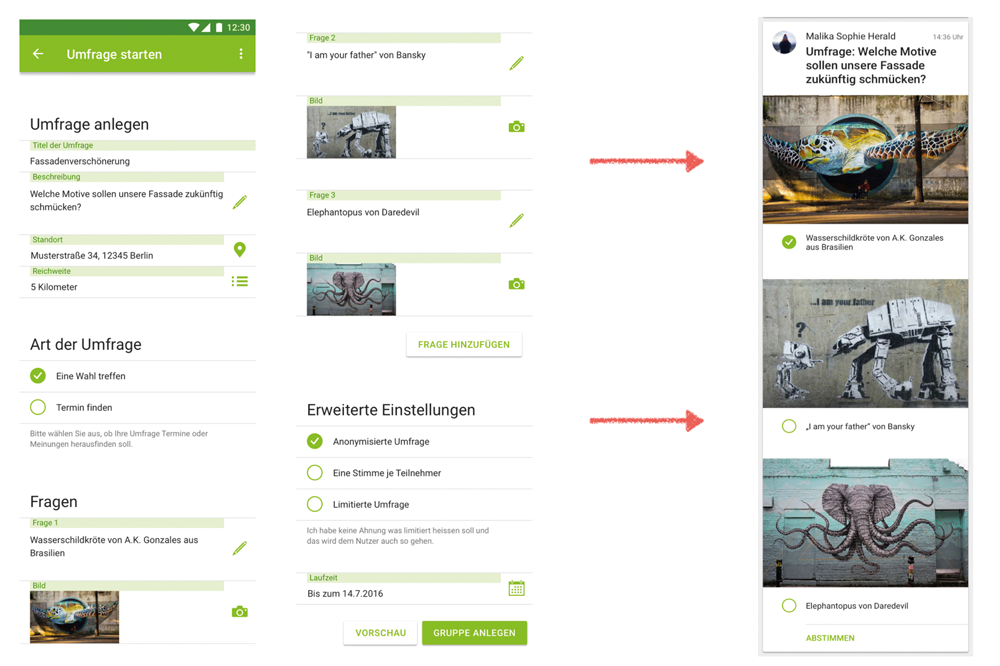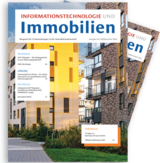The easysquare neighbourhood app – exclusive insights into the development work

IT&I: Mr Wahl, PROMOS has been operating on the housing industry market for many years now with mobile services such as the easysquare mobile app. Why have you decided to integrate a neighbourhood service into easysquare now too?
Maxim Wahl: We live in a society in which we are no longer impressed by material values alone. Let me put it like this: the shiniest high-end oven is no good to me if I cannot use it to cook a delicious meal together with my family and friends. The situation with housing is similar. A tenant will only feel happy in a 200 square metre loft apartment in the Prenzlauer Berg area of Berlin once he or she has made this location feel like home. This is not just about fancy furniture and expensive fittings, but also the people the tenant is surrounded by. Recently, housing companies have also had to acknowledge this. Simply providing living space is no longer enough. The living situation itself must be designed in a way that satisfies the tenant. And since we see ourselves as an all-round service provider for the housing industry, we also want to support our customers here with relevant services.
IT&I: Why is PROMOS in a good position to provide a neighbourhood app?
Wahl: PROMOS has been a pioneer in the area of real-estate innovations for almost 20 years now. With easysquare, we also have the necessary experience and technical expertise for designing and establishing a platform application. We know the requirements for ease of use and, thanks to our diverse team of product developers, provide a foundation that is way ahead of our competitors in terms of technology.
IT&I: That sounds like a convincing starting position. Tell us what you think is the key aspect of the app?
Wahl: The neighbourhood app is designed to meet the tenants’ need to interact within their neighbourhood. This is implemented in our “My neighbours” section. In addition, the app features a real market place – the “Neighbourhood assistance”. Offers and requests can be place here in a similar way to a notice board, and accommodates the tenants’ commercial needs. We believe that the main motivation of the tenants for registering with this kind of app is to get in touch with one another.

Abbildung 1: Startmasken der Bereiche „Meine Nachbarn“ und „Nachbarschaftshilfe“.
IT&I: And how can we envisage this? What possibilities do tenants have for communicating with others?
Wahl: Well, first of all, the tenant registers with the neighbourhood app by means of a defined verification procedure. He or she creates a profile and is then able to see all neighbours within a specific radius – currently this is five kilometres. The advantage of this vicinity restriction compared to a district is that the majority of people live at the edge of a district. In many cases, these people will have less interaction with tenants at the other end of the district than the neighbour who lives opposite, but not in the same district. The “My neighbours” section then provides three different functions for users: a conventional bulletin board where comments can be posted, the option to form groups and an area to start up activities.
IT&I: How do groups and activities differ?
Wahl: Members of the community can create, join or search for both groups and activities. Groups are intended as a place for chatting about mutual interests. Examples include a “Photo friends” or “Lucky parents” group. Activities, on the other hand, are used to organise regular or one-off events and appointments in the neighbourhood. Both activities and groups are allocated a category and location when they are created. This allows users to display all their neighbours’ initiatives on a map with thematic icons. Another thing the two have in common is that users can start a survey within the group or activity. This could be used for a vote or to schedule a date. For instance, let us assume I want to start a volleyball group. As well as the date and time, a sports hall also needs to be chosen. There are thus a variety of options for our survey. All doors are open to our tenants, from anonymised surveys and date selections to the possibility to option of adding images to the decision options. By the way, these surveys can also be started from our bulletin board.
IT&I: Herr Wahl, was unterscheidet denn die easysquare Nachbarschafts App von Produkten anderer Anbieter?
Wahl: Neben den bereits beschriebenen Funktionalitäten, wie z. B. der Umkreiseingrenzung oder der Umfragefunktion, ist das vor allem der auf die eher kommerziellen Bedürfnisse ausgerichtete Marktplatz: unsere Nachbarschaftshilfe. Zwar spielt auch hier, wie der Name schon sagt, der soziale Aspekt eine Rolle. Der Mieter soll jedoch auch die Möglichkeit haben, Dienstleistungen, wie z. B. Nachhilfeunterricht oder Tiersitter-Services, gegen ein Entgelt anzubieten oder zu suchen. Ein Pinnwand-Gesuch, wie es auf anderen Plattformen üblich ist, wäre auch denkbar gewesen. Allerdings verschwindet dieser mit der Zeit hinter neueren Einträgen. Außerdem ist es dem User mit unserem Dienst möglich, seine Angebote und Gesuche gezielt zu kategorisieren und auch später noch einmal zu bearbeiten. Das macht es allen Beteiligten einfacher, das richtige Angebot für sich zu finden und auszuwählen. Früher hat man sowas über ein schwarzes Brett im Hausflur gemacht. Heute erreiche ich mit einer Nachbarschafts App gleich ein ganzes Wohngebiet.
IT&I: Das klingt erfolgsversprechend für den Mieter. Aber welche Funktionen stellen Sie dem Wohnungsunternehmen zu Verfügung?
Wahl: Ein Wohnungsunternehmen, das sich dazu entscheidet, eine Nachbarschafts App für seine Mieterkommunikation zu nutzen, erhält selbstverständlich zunächst einmal die Möglichkeit, sein Logo in die App einzubinden. Wir unterscheiden zudem zwischen Mietern, die sich unabhängig auf der Plattform anmelden und Mietern, die sich als Mieter ihres Wohnungsunternehmens registrieren. Letztere haben in der Regel weitere Dienste in ihrer App integriert, z. B. die Möglichkeit ihre Verträge einzusehen oder einen Schaden zu melden. Das Wohnungsunternehmen agiert in der App nicht wie private User, sondern als Anbieter von Aktionen oder Veranstalter von Terminen. Es kann hierbei selbst entscheiden, ob er sich mit seinem Vorhaben an alle Mieter oder nur seine eigenen richtet.


IT&I: Was könnten das für Aktionen sein?
Wahl: Unter einer Aktion verstehen wir alle Arten von kommerziellen Anliegen. Das Wohnungsunternehmen kann über Aktionen eigene Produkte vermarkten, Gutscheine an die Mieter verteilen oder auf Aktivitäten sozialer Einrichtungen aufmerksam machen. Für Wohnungsunternehmen ist es Gang und Gäbe, Gutscheine, für z. B. Veranstaltungen, von Partnerunternehmen zu erhalten. Diese können dann einfach und bequem über den Marktplatz verteilt werden. Die App zeigt an, wie viele Gutscheine bereits verteilt wurden und schließt die Aktion automatisch, sobald die Veranstaltung vorbei ist oder die Karten vergeben sind. Auf diese Weise können auch Gewerbemieter von Wohnungsunternehmen gepusht werden. Heutzutage, mit wachsender Zahl großer Shoppingmalls, wird es für Einzelgewerbetreibende immer schwieriger, ihre Kunden zu halten. In der App können Gewerbemieter Vorteilskonditionen für Anlieger anbieten. Das ist eine Win-win-Situation für alle Beteiligten.

Abbildung 4: Es bestehen vielfältige Optionen, um Umfragen oder Terminauswahlen zu starten.
IT&I: And in what sense are the housing companies involved in designing their tenants’ living situation with the neighbourhood app?
Wahl: The neighbourhood app is one of the very few tools that allow housing companies to have a targeted, effective and direct impact on tenants. The goal of many of our customers is to improve their neighbourhood. Those who invest in buildings must also invest in the community – and the neighbourhood app provides a unique opportunity for this.
IT&I: Mr Wahl, one last question. How would you describe the neighbourhood app in three words?
Wahl: Forward-looking, intuitive, surprisingly different. That was four, wasn't it? (laughs)
redaktion@openpromos.de


